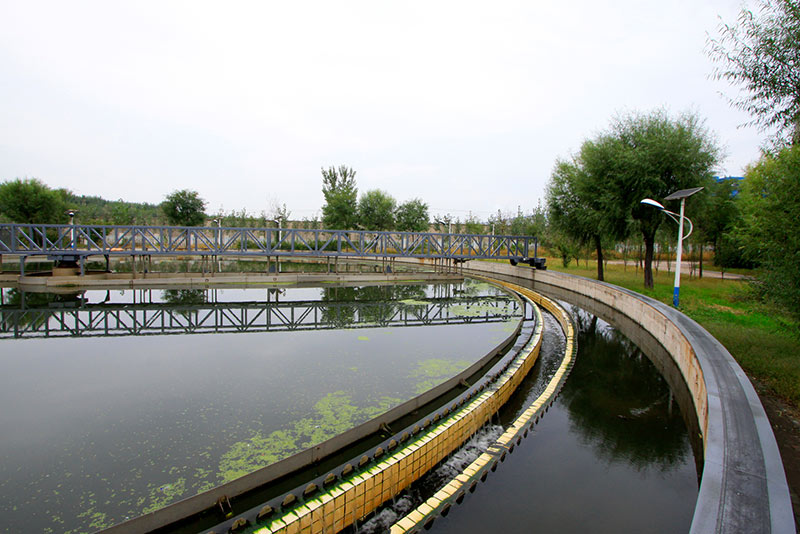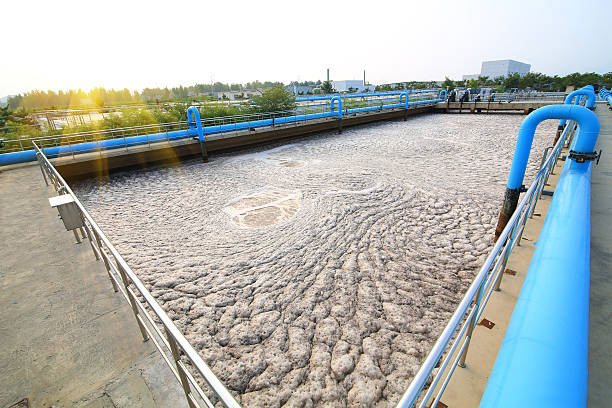Delafield-Hartland Water Pollution Control Commission

Our intercepting sewer system comprises the Delafield-Hartland Main Interceptor and the Nashotah Interceptor, along with four pumping stations. These components collect raw wastewater from various municipalities and convey it to the treatment plant for processing.
The Delafield-Hartland Main Interceptor spans over 42,858 feet, reaching from the Village of Hartland through the City of Delafield, while the Nashotah Interceptor serves the Village of Nashotah and western Delafield.
Our state-of-the-art wastewater treatment plant currently processes an average daily flow of approximately 1,900,000 gallons per day, catering to a population equivalent of 22,000 people. We utilize a combination of physical and biological processes to remove contaminants and purify the wastewater before releasing it back to the environment. Prior to treatment, the flow is sampled and measured for biological oxygen demand (BOD), suspended solids, ammonia, phosphorus, and pH.
These measurements determine the amount of pollution in the waste stream. With our focus on environmental preservation, the plant removes over 99% of Biological Oxygen Demand (BOD), suspended solids, and over 90% of ammonia from raw wastewater.
We employ the following comprehensive wastewater treatment processes to safeguard the environment.
Wastewater, also called influent, flows from the interceptor system into the plant wet well where is it pumped to the mechanical bar screens. Mechanical bar screens remove debris such as rags, wipes, feminine hygiene products, sticks, rocks and other miscellaneous inorganic debris. This waste is compacted and transferred to a dumpster for landfill disposal. After initial screening, influent flows by gravity through the grit system which removes additional smaller organic/inorganic materials such as sand, fines, eggshells, and coffee grounds. Grit waste is also bagged and landfill disposed. The septage/recycle storage tank regulates the flow of high-strength wastes and septage to reduce the impact on downstream processes within the wastewater plant.
Designed for velocity reduction (3-4 hours of detention time) to promote efficient settling, primary clarifiers remove approximately 65% of the suspended solids from influent wastewater, transferring the settled solids (primary sludge) to the anaerobic digestion process. Reducing a large volume of solids in primary treatment results in BOD reduction of roughly 55 %. Floatable organics such as oil and grease are skimmed off the top of the primary clarifiers and then combined with Waste Activated Sludge (WAS) for thickening.
Wastewater from the primary clarifiers enters a splitter box where the flow is split evenly between three anaerobic/anoxic/aeration tanks where biological treatment begins. This biological process removes organic material like BOD, ammonia, and phosphorus using the three anaerobic, anoxic, and aerobic tanks controlled by dissolved oxygen concentration.
As the wastewater exits the aeration basin, it enters the final clarifiers. In the final clarifiers, the microorganisms settle to the bottom and clean water flows over the weirs. Most settled sludge is returned to the activated sludge process with a small percentage of the settled sludge (WAS) wasted to the WAS tank for thickening.
Treated effluent from the final clarifiers flow to the three cloth disc filters for removal of any remaining suspended solids. Effluent then flows to the contact tank for disinfection.
Tertiary effluent flows from the Filter Building to the adjacent contact tanks for disinfection. Any viruses or bacteria that have survived the treatment process are killed using UV light. This final process is followed by the effluent discharging through roughly 4 miles of effluent pipe, over an aeration cascade, and into the Bark River.


The Delafield-Hartland Wastewater Treatment Plant operates a Septage/RV dump station at 416 Butler Drive, Delafield. The site is open all year long, Monday through Friday, from 7:00 a.m. to 3:30 p.m. To use the site, stop at the main office building to pay the $5 dump station user fee and staff will escort you to the RV dump site. Septage haulers must be permitted prior to utilizing the dump station. Please contact our office for more information.
The laboratory is an essential part of the day-to-day operations in the reclamation facility. Adjustments to various processes are made based on daily or weekly lab results. The lab technician conducts a series of daily, weekly, monthly, quarterly, and annual tests in accordance with the National Pollution Discharge Elimination System (NPDES) permit.
The treatment plant processes are monitored and controlled by a computer-based instrumentation and control system. In the control room, operations staff can check the status of the plants’ operating systems, adjust equipment, monitor flow volumes, and monitor lift stations. The control room provides operations staff with monitoring capabilities 24 hours per day, 7 days per week.
Let’s work together to build a cleaner, healthier future for our communities and our environment. We are here to answer your questions and provide support.
© 2024 All Rights Reserved | Website Design by Matt Gerber Designs